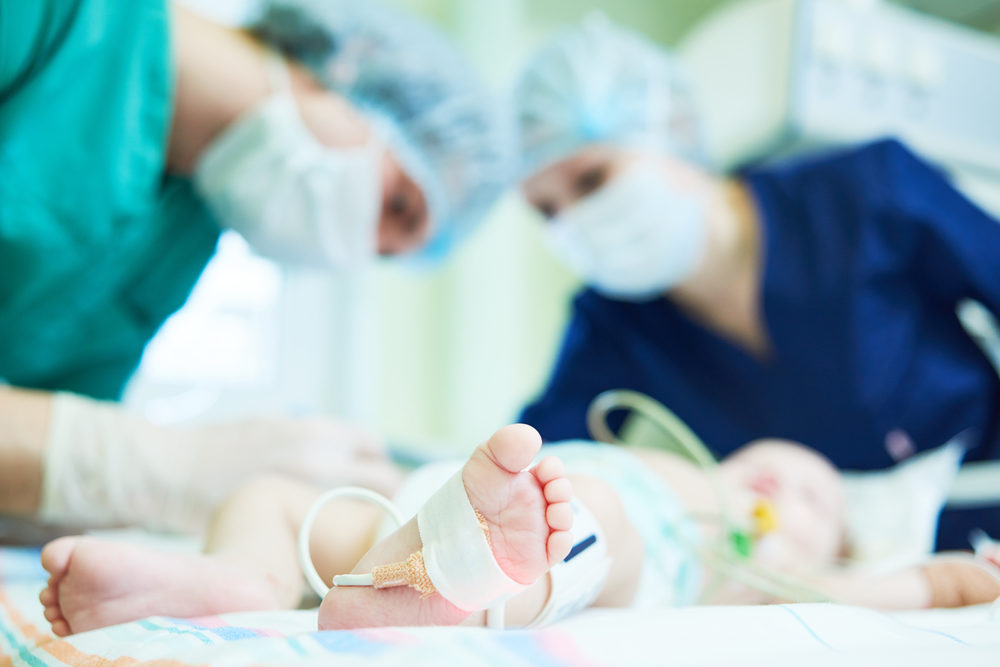
Scientists at the University of California – Davis are aiming to curb the number of brachial plexus birth injuries through a study that includes data taken from millions of families at hospitals throughout California.
A brachial plexus birth injury, known as a BPBI, affects between one and three newborns out of 1,000 every year and is the leading cause of infants’ upper extremity paralysis. The condition involves the nerves of the brachial plexus, located between the neck and shoulders, which control muscle function in the chest, shoulder, arms and hands.
A BPBI occurs when the nerves are damaged during childbirth, often the result of shoulder dystocia, a condition where the baby’s shoulder becomes stuck on one side of the pubic bone after the head has come through. The nerves are stretched, compressed, or torn, resulting in a loss of muscle function or paralysis.
Brachial Plexus Birth Injury Study
The researchers are studying data from more than 11 million births from 1991-2012 to evaluate the association of maternal factors, prenatal care utilization and hospital characteristics.
The data includes the mother’s demographic, social, economic, geographic and health information for the nine months before and the 12 months after delivery, as well as their infants’ demographic, social and health information from birth through the first year of life.
Dr. Mary Claire Manske, an orthopedic surgeon at UC Davis, is the head of the project and director of the Brachial Plexus Birth Injury Center. In an article for UC-Davis, she explained when it comes to BPBI, studying both mother and child is paramount in creating a “predictive risk model’’ and will lead to new intervention strategies to reduce the risks of a newborn contracting BPBI.
Manske also hopes the study will facilitate public health initiatives to address disparities in BPBI risk and support prevention efforts. “The broader impact of this work is better collaborations among the different providers involved in this multidisciplinary condition,” she said.
How Do Brachial Plexus Birth Injuries Happen?
Currently, doctors recognize at least three major causes of BPBI. They include a mother having a breech birth, if the baby’s shoulders are too big to fit through the birth canal or if the mother has long labor.
Sometimes a brachial plexus birth injury is a result beyond the control of the medical community. However, families need to recognize that if the doctor or the delivery team does not take necessary precautions to avoid birth trauma, or if the doctors fail to address the condition, they should be held responsible for the child’s injuries, which could worsen over time.
Types of Brachial Plexus Birth Injuries
All brachial plexus birth injury cases are not alike. When a BPBI occurs during childbirth, the result is usually either Erb’s palsy or Klumpke’s palsy.
Erb’s Palsy affects the nerves between the shoulder and the elbow, and the victim can lose feeling or have weakness in one arm or experience partial or total paralysis.
Klumpke’s palsy, which affects the hand’s nerves, is often more severe and can include more symptoms than Erb’s palsy. Symptoms of Klumpke’s palsy could include:
- Atrophy in the muscles of the forearm or hand
- A condition identified as “claw hand” causes the forearm to lie flat while the wrist and fingers are tightened
- Horner’s syndrome, which is drooping of the eyelid on one side of the face
- Weakness of or inability to use the muscles of the affected hand
- Numbness of the affected hand
- Stiff joints and/or pain that could become severe
There are also four identified types of brachial plexus birth injuries among newborns and infants.
Neuropraxia – Neuropraxia injuries are the most common type of BPBI and the least severe. They occur when the nerve has been injured somehow, but it is most likely stretched, not torn, and can heal itself (however, 10 percent of neuropraxia BPBIs will not).
Neuroma – Neuroma injuries are “healed’’ tears. They are similar to neuropraxia, but the scar tissue is pressing on the nerve and stops the child’s muscles from receiving any signals from the nerves.
Rupture – A rupture of the brachial plexus nerve is when the nerve itself tears but remains attached to the spinal column.
Avulsion – The most severe BPBI injury is an avulsion injury. This occurs when the nerve has been torn from the spinal column. If left untreated, the child’s limb may become permanently paralyzed.
Brachial Plexus Treatment and Prevention
Currently, when a child suffers from a BPBI, a doctor will evaluate the different ways they should be treated while keeping in mind that some of the injuries could become permanent if not evaluated and cared for promptly.
Presently, potential treatment could require muscle or nerve transfer surgery, nerve grafting, physical therapy, and/or medication. However, scientists are optimistic that the new study will provide answers for future treatments (and prevention).
The UC-Davis project is being funded with a grant from the U.S.Department of Health and Human Service/Health Resources and Services Administration. The agency’s press release stressed that the study would be the first time researchers have taken such a large, multi-factor approach to look at BPBIs. Such an approach with the data from each, the mother, the baby as well as the hospital “…is necessary to identify those at greatest risk and guide targeted interventions to decrease BPBI.’’
What To Do If A Brachial Plexus Injury Is Due to Negligence?
Unfortunately, while a parent innately wants to love and protect their child, having a baby with a BPBI or any birth injury can cause both emotional and financial stress. If the injury was caused by medical negligence, the doctor or medical team responsible for the error must be held accountable for the child (and family) to have the quality of life they deserve.
The attorneys at Paulson & Nace have extensive experience in birth injury lawsuits in the Washington D.C. area and specifically advocating for parents of babies with brachial plexus injuries. Their goal is to ensure the child’s needs are met and the family can live the best life possible.
If you believe your child has suffered a brachial plexus birth injury due to negligence, Paulson & Nace can help you move forward to get the financial support you need to provide the treatment your child will require to heal. Schedule your free case evaluation in our Washington, D.C. or Charleston, WV office by calling 202-851-9899 or contact us online.
@thumbnail.jpg)
Both an Emory School of Law graduate and MBA graduate of Goizueta Business School at Emory, Chris Nace focuses his practice on areas of medical malpractice, drug and product liability, motor vehicle accidents, wrongful death, employment discrimination and other negligence and personal injury matters.














Comments for this article are closed.